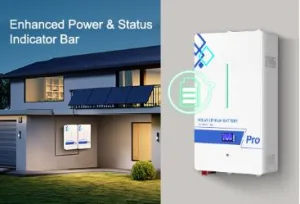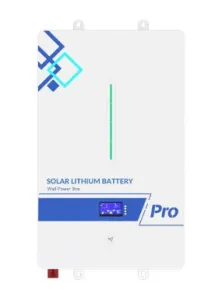How Does Cycle Life Impact Your 48V Lithium Battery Investment?

You’ve invested significantly in your solar installation project, carefully selecting premium panels and planning for decades of clean energy production. But what happens when your battery system fails just a few years in? This scenario is more common than you might think, often stemming from a single overlooked metric: cycle life.
In the world of 48v lithium battery systems, cycle life stands as the fundamental determinant of your return on investment. This critical specification measures how many charge-discharge cycles your battery can endure before significant capacity loss occurs, directly impacting system longevity and financial returns.
For contractors and installers, choosing batteries without thoroughly understanding cycle life metrics can lead to costly replacements, damaged client relationships, and compromised project economics. The difference between a battery rated for 3,000 cycles versus 6,000 cycles could mean doubling your replacement frequency and maintenance costs.
As we explore the intricacies of cycle life, you’ll discover how supplier selection and technical decisions create ripple effects throughout your project’s lifespan, ultimately determining whether your battery investment delivers lasting value or becomes a recurring expense.
Demystifying Cycle Life: The Core of 48V Lithium Battery Value
Cycle life represents the number of complete charge and discharge cycles a battery can perform before its capacity degrades to 80% of its original rating – the industry-standard benchmark for functional end-of-life. While warranty periods typically span 5-10 years, actual cycle life determines your battery’s true operational lifespan, often extending well beyond basic warranty coverage when properly engineered.
Why Cycle Life Dictates Functional Longevity
Each solar installation undergoes daily cycling as energy flows from panels to storage and back to power loads. A system completing one full cycle per day accumulates 365 cycles annually. Leading manufacturers like Anern produce high-quality 48V lithium batteries rated for 6,000 cycles that can theoretically operate for 16+ years under these conditions, while lower-grade units rated at 3,000 cycles may require replacement in just 8 years.
When batteries exceed their rated cycle life, capacity degradation accelerates dramatically. This creates a dangerous spiral where remaining cells work harder to deliver the same power, leading to thermal stress, potential safety risks, and eventual system failure. Understanding this relationship between daily usage patterns and cycle life ratings becomes crucial for accurate system planning and long-term reliability.
Cycle Life’s Direct Impact on Battery Investment Economics
The financial implications of cycle life extend far beyond initial purchase costs. A battery system rated for 6,000 cycles versus 3,000 cycles effectively doubles your investment’s productive lifespan, dramatically reducing the frequency of replacement cycles. This extended service life translates directly to improved project economics through decreased maintenance interventions and sustained system performance.

Calculating True Cost Per Cycle
To accurately assess battery value, divide total system costs (including installation) by the rated number of cycles. For example, a $10,000 system rated for 6,000 cycles costs $1.67 per cycle, while a $7,000 system rated for 3,000 cycles costs $2.33 per cycle. This 40% higher cost per cycle compounds with additional installation expenses and system downtime for replacements.
Hidden Costs of Short Cycle Life
Premature battery replacements trigger cascading expenses often overlooked during initial procurement. Labor costs for emergency replacements typically exceed standard installation rates by 30-50%. System downtime during replacements can span 2-5 days, disrupting client operations and potentially damaging critical relationships. Additionally, repeated installation processes increase risks of connection failures and system integration issues, leading to higher long-term maintenance requirements and reduced system reliability.
Technical Excellence: Engineering Behind Cycle Life Performance
The foundation of cycle life performance lies in battery chemistry selection and manufacturing precision. Lithium Iron Phosphate (LFP) cells typically demonstrate superior cycle life compared to Nickel Manganese Cobalt (NMC) alternatives, often achieving 6,000+ cycles versus 3,000-4,000 cycles. This durability advantage stems from LFP’s inherently stable crystal structure, which resists degradation during repeated charge-discharge cycles.

Manufacturing Quality’s Critical Role
Manufacturing excellence dramatically influences cycle life outcomes. Precision electrode coating thickness variations must remain within ±2 micrometers to ensure uniform current distribution and prevent localized degradation. Similarly, electrolyte filling processes require vacuum-controlled environments maintaining less than 50 PPM moisture content to prevent premature aging.
Architectural Decisions Maximizing Cycle Life
Smart system architecture decisions can significantly extend battery cycle life beyond manufacturer ratings. Setting appropriate Depth of Discharge (DoD) limits proves crucial – restricting discharge to 80% instead of 100% can increase cycle life by up to 40%. This conservative approach maintains higher average cell voltage and reduces stress on internal components.
System Design Strategies
Strategic battery bank sizing represents another powerful optimization lever. Installing 20-30% more capacity than minimum requirements allows each cell to operate within a gentler cycling range. While this approach increases upfront costs, the reduced strain on individual cells typically extends system lifespan by 3-5 years, delivering superior long-term economics.
Selecting Your Solar Battery Supplier: A Contractor’s Framework
When evaluating 48V lithium battery suppliers, contractors must scrutinize cycle life claims through documented test data. Reputable manufacturers provide detailed cycling reports from independent laboratories, including accelerated aging studies and real-world performance data. These reports should specify testing conditions, including temperature ranges, discharge depths, and current rates that mirror actual installation environments.
Maximizing Battery Investment Through Cycle Life Optimization
In the high-stakes world of solar installations, cycle life emerges as the definitive metric separating profitable investments from costly liabilities. While initial battery costs naturally command attention, the true measure of system value lies in sustained performance across thousands of cycles. Contractors who master this understanding gain a powerful advantage in delivering superior long-term value to their clients.
Success demands rigorous supplier evaluation focused on documented cycle life performance, verified manufacturing quality, and comprehensive support infrastructure. Equally critical are system design decisions that actively protect and extend cycle life through conservative DoD limits, strategic oversizing, and advanced BMS integration. These elements work together to create resilient installations that consistently exceed client expectations.
As the solar storage market continues its rapid evolution, making cycle life a primary specification – equal to or exceeding price considerations – will increasingly separate industry leaders from followers. For contractors committed to building lasting client relationships and sustainable businesses, this focus on cycle life optimization provides the foundation for enduring success.
